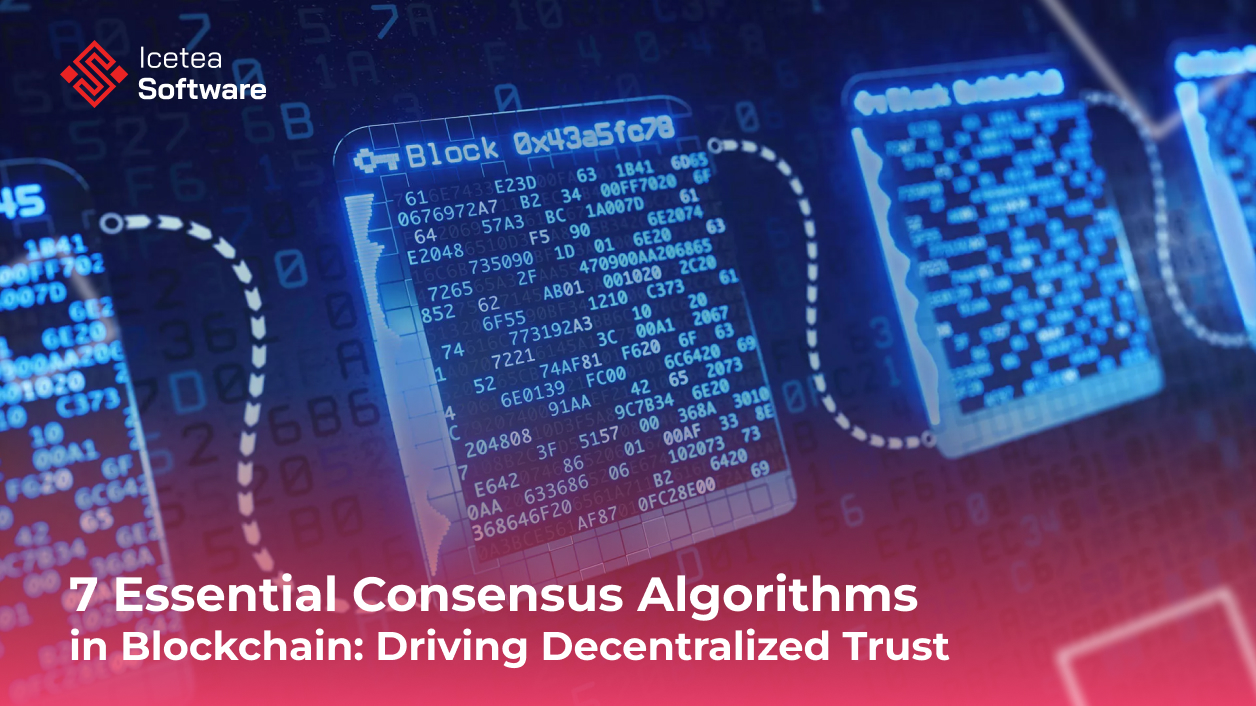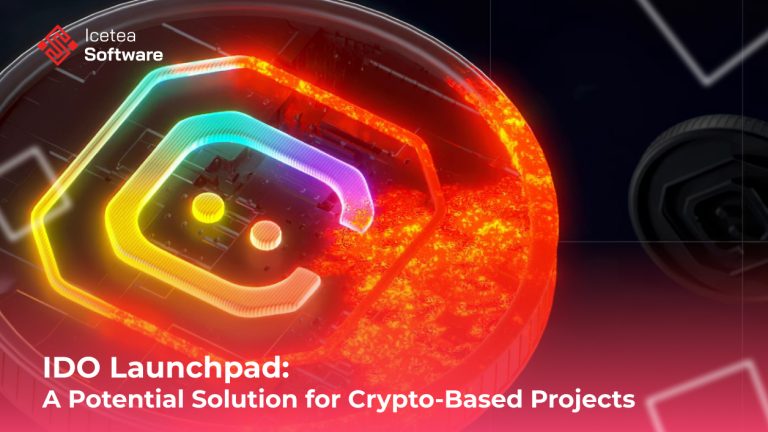7 Essential Consensus Algorithms in Blockchain: Driving Decentralized Trust
Blockchain technology has emerged as a revolutionary force, offering transparency, security, and decentralization. At the core of blockchain’s functionality lies its consensus algorithms, the protocols that ensure agreement among distributed participants on the state of the network. These algorithms are fundamental to maintaining trust and integrity in decentralized systems, where no single authority governs transactions or data validation.
In this article, we explore the role of consensus algorithms in blockchain, examine various types, and highlight the challenges and innovations shaping their evolution. Additionally, we delve into the latest trends and examples of how consensus algorithms power diverse applications.
What Are Consensus Algorithms?
Consensus algorithms are mechanisms used in distributed systems to achieve agreement on a single source of truth. In blockchain, they validate transactions, ensure synchronization across nodes, and maintain the integrity of the ledger. Without consensus algorithms, decentralized systems would be prone to inconsistencies, double-spending, and malicious attacks.
Blockchain consensus ensures that all network participants, regardless of geographic or political barriers, can operate in a trustless environment—one that doesn’t require intermediaries to verify and approve transactions.
The Importance of Consensus Algorithms
Consensus algorithms play several critical roles in blockchain systems:
- Ensuring Security: They prevent malicious actors from altering transaction histories or gaining control of the network.
- Facilitating Decentralization: Consensus eliminates the need for central authorities, promoting inclusivity and transparency.
- Synchronizing the Ledger: By achieving agreement among nodes, they maintain a single, unified version of the blockchain.
These functions are essential to the reliability of blockchain technology, enabling its adoption in financial systems, healthcare, logistics, and more.
Types of Consensus Algorithms
Over time, developers have created various consensus algorithms, each with unique mechanisms, advantages, and trade-offs.
1. Proof of Work (PoW)
PoW is the first consensus mechanism introduced by Bitcoin. It requires miners to solve computational puzzles to validate transactions and create new blocks. The first to solve the puzzle earns rewards, promoting fairness but demanding significant computational power.
- Advantages: Robust security, resilience against attacks.
- Drawbacks: High energy consumption, scalability limitations.
2. Proof of Stake (PoS)
PoS replaces energy-intensive mining with token-based validation. Validators are chosen based on the number of tokens they stake as collateral. This approach is more energy-efficient and aligns validators’ incentives with the network’s health.
- Advantages: Reduced energy usage, improved scalability.
- Drawbacks: Risk of centralization if few participants hold large token shares.
3. Delegated Proof of Stake (DPoS)
DPoS enhances PoS by introducing a democratic system where stakeholders elect delegates to validate transactions. This increases efficiency and reduces transaction times but centralizes validation to a limited number of nodes.
- Advantages: High throughput, scalability.
- Drawbacks: Reduced decentralization.
4. Practical Byzantine Fault Tolerance (PBFT)
PBFT is designed for permissioned blockchains, where participants are known and trusted. It uses a system of message exchanges to reach consensus, tolerating malicious or faulty nodes up to a certain threshold.
- Advantages: High efficiency in small networks.
- Drawbacks: Communication overhead increases with network size.
5. Proof of Authority (PoA)
In PoA, pre-approved validators (authorities) are responsible for validating transactions. This consensus model is ideal for private blockchains requiring high efficiency and low latency.
- Advantages: High performance, minimal computational requirements.
- Drawbacks: Lack of decentralization, reliance on trusted validators.
6. Proof of Burn (PoB)
PoB requires participants to “burn” cryptocurrency (send it to an unrecoverable address) as proof of their commitment to the network. This entitles them to validate transactions and earn rewards.
- Advantages: Energy efficiency compared to PoW.
- Drawbacks: Resource wastage, potential centralization.
7. Proof of Elapsed Time (PoET)
PoET assigns random wait times to nodes, and the first to complete its wait validates the next block. This approach is energy-efficient and fair, relying on trusted execution environments.
- Advantages: Low energy use, fair validation.
- Drawbacks: Dependency on hardware integrity.
Challenges in Consensus Mechanisms
Despite their transformative potential, consensus algorithms face significant challenges:
- Energy Consumption: PoW’s high energy usage has drawn criticism, prompting a shift toward greener alternatives like PoS.
- Scalability: Achieving consensus in large networks can lead to delays, especially for PoW and PBFT systems.
- Security Risks: Consensus mechanisms must guard against threats like Sybil attacks, 51% attacks, and network partitioning.
- Decentralization vs. Efficiency: Some algorithms, like DPoS and PoA, trade decentralization for performance, raising concerns about centralization.
- Regulatory Concerns: Governments are scrutinizing blockchain networks, requiring consensus mechanisms to adapt to compliance and transparency demands.
Recent Innovations and Future Directions
The blockchain community continues to innovate, addressing the shortcomings of existing consensus algorithms:
- Hybrid Models: Combining features of PoW, PoS, and PBFT to balance security, efficiency, and decentralization.
- Sharding: Dividing the blockchain into smaller segments to increase scalability and reduce congestion.
- Layer 2 Solutions: Offloading transactions to secondary layers, as seen in Lightning Network for Bitcoin and Optimistic Rollups for Ethereum.
- Quantum-Resistant Algorithms: Developing mechanisms to protect against potential quantum computing threats.
These innovations reflect the adaptability of blockchain technology in addressing scalability, security, and environmental concerns while staying aligned with global technological advancements.
Applications of Consensus Algorithms
Consensus algorithms underpin a wide range of blockchain applications:
- Cryptocurrencies: Secure peer-to-peer transactions (e.g., Bitcoin’s PoW, Ethereum’s PoS).
- DeFi Platforms: Enabling decentralized financial services like lending, borrowing, and trading.
- Supply Chain Management: Tracking goods and ensuring transparency with PoA or PBFT systems.
- Healthcare: Safeguarding patient data and ensuring interoperability among providers.
- Gaming and NFTs: Supporting high transaction volumes and ownership verification.
Final Thoughts
Consensus algorithms are the lifeblood of blockchain, enabling decentralized networks to function securely, efficiently, and transparently. From PoW’s pioneering approach to innovative PoS models and hybrid solutions, they continue to evolve in response to technological advancements and societal demands.
As blockchain adoption expands, addressing challenges like scalability, energy efficiency, and security will be critical. The future of consensus lies in balancing decentralization, performance, and sustainability, paving the way for a more inclusive and equitable digital ecosystem.
Understanding these algorithms is essential for anyone engaged with blockchain technology, from developers and enterprises to everyday users. As innovation continues, consensus mechanisms will remain at the forefront, driving the next wave of decentralized transformation.
𝐼𝑐𝑒𝑡𝑒𝑎 𝑆𝑜𝑓𝑡𝑤𝑎𝑟𝑒 𝑖𝑠 𝑎 𝑙𝑒𝑎𝑑𝑖𝑛𝑔 𝑊𝑒𝑏3 𝑑𝑒𝑣𝑒𝑙𝑜𝑝𝑚𝑒𝑛𝑡 𝑐𝑜𝑚𝑝𝑎𝑛𝑦 𝑏𝑎𝑠𝑒𝑑 𝑖𝑛 𝑉𝑖𝑒𝑡𝑛𝑎𝑚, 𝑘𝑛𝑜𝑤𝑛 𝑓𝑜𝑟 𝑝𝑖𝑜𝑛𝑒𝑒𝑟𝑖𝑛𝑔 𝑏𝑙𝑜𝑐𝑘𝑐ℎ𝑎𝑖𝑛 𝑠𝑜𝑙𝑢𝑡𝑖𝑜𝑛𝑠 𝑎𝑛𝑑 𝑑𝑒𝑐𝑒𝑛𝑡𝑟𝑎𝑙𝑖𝑧𝑒𝑑 𝑎𝑝𝑝𝑙𝑖𝑐𝑎𝑡𝑖𝑜𝑛𝑠 (𝑑𝐴𝑝𝑝𝑠), 𝑑𝑟𝑖𝑣𝑖𝑛𝑔 𝑖𝑛𝑛𝑜𝑣𝑎𝑡𝑖𝑜𝑛 𝑖𝑛 𝑑𝑒𝑐𝑒𝑛𝑡𝑟𝑎𝑙𝑖𝑧𝑒𝑑 𝑓𝑖𝑛𝑎𝑛𝑐𝑒, 𝑁𝐹𝑇𝑠, 𝑎𝑛𝑑 𝑏𝑒𝑦𝑜𝑛𝑑.
————————————
𝐈𝐜𝐞𝐭𝐞𝐚 𝐒𝐨𝐟𝐭𝐰𝐚𝐫𝐞 – 𝐂𝐮𝐭𝐭𝐢𝐧𝐠 𝐄𝐝𝐠𝐞 𝐓𝐞𝐜𝐡𝐧𝐨𝐥𝐨𝐠𝐢𝐞𝐬
𝐖𝐞𝐛𝐬𝐢𝐭𝐞: iceteasoftware.com
𝐋𝐢𝐧𝐤𝐞𝐝𝐢𝐧: https://www.linkedin.com/company/iceteasoftware/
𝐅𝐚𝐜𝐞𝐛𝐨𝐨𝐤: https://www.facebook.com/IceteaSoftware/
𝐓𝐰𝐢𝐭𝐭𝐞𝐫: https://x.com/Icetea_software








